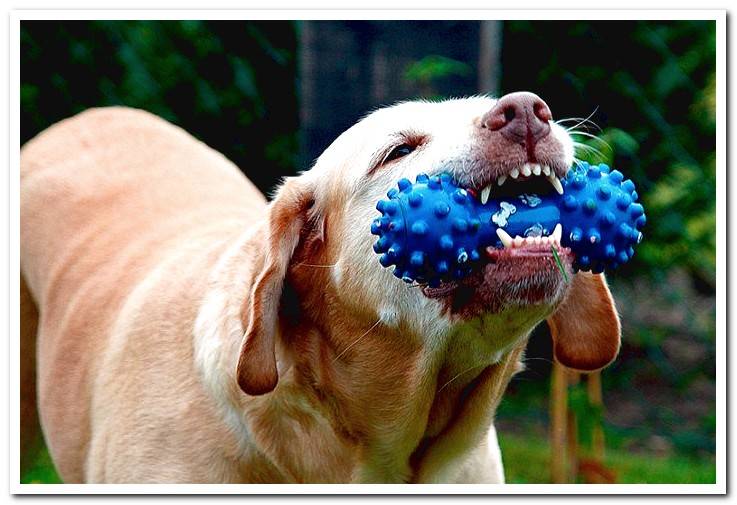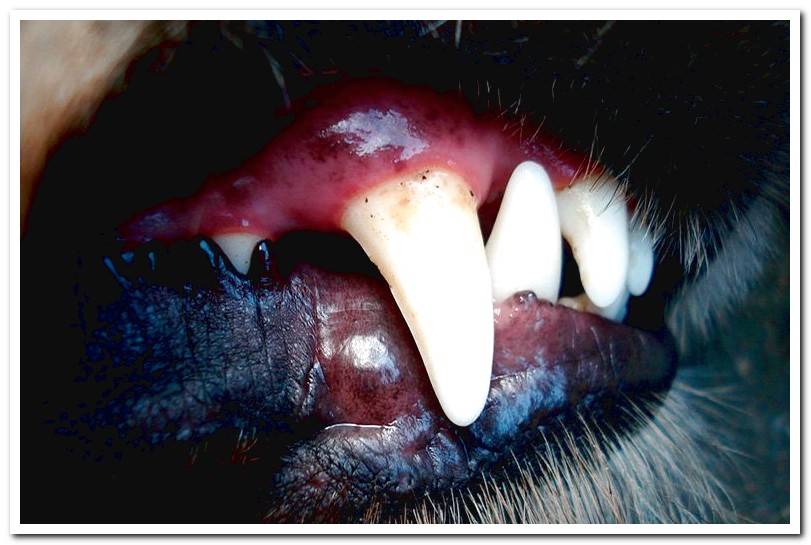
Many times pets’ teeth are neglected when they consider that they do not require care. However, there are several dental diseases that can become a real problem for our dog, in addition to causing pain and discomfort.
Knowing the main diseases and their symptoms will help us detect them in time and go to the vet if necessary. Ready to discover them?
Index of contents
- 1 Your dog’s teeth don’t clean on their own
- 2 Dental diseases that affect dogs
- 2.1 Tartar
- 2.2 Periodontitis
- 2.3 Gingivitis
- 2.4 Stomatitis
- 2.5 Mouth sores
- 2.6 Halitosis
Your dog’s teeth don’t clean on their own
The cubs have a 28-piece denture, divided into 12 premolars and 12 incisors, plus 4 fangs. This number increases to 42 when they reach adulthood because, like human beings, your dog changes its baby teeth.
Although dogs are pets, you must remember that the diet they have at home is very different from what they would eat in the wild. While a non-domesticated dog eats meat and is able to keep teeth in good condition, home-made food, including animal feed, give way to some dental problems.
For this reason, you should accustom your dog to a routine of dental hygiene from puppy, including brushing and other options offered by the vet.
- How to Clean a Dog’s Teeth

Dental diseases that affect dogs
Even with a hygiene routine, your dog is at risk of dental or oral disease. Although the higher your hygiene, the lower that risk will be. These are the most common oral diseases:
Tartar
Tartar consists of plaque formation bacterial in the teeth of your dog. You will notice it as yellowish or brown stains on your teeth, accompanied by bad breath.
Combating tartar requires several measures, such as professional cleaning and a change in eating habits. Not acting on it, can lead to serious infections and even the loss of part of your teeth.
- How to remove tartar naturally
Periodontitis
Most oral diseases are caused by tartar, periodontitis is among them.
It is a dental infection It can appear after 2 years. As a result of the accumulation of bacteria present in the dental plaque, the muscles, gums and the teeth themselves begin to be affected.
Your symptoms are:
- Inflammation of the gums
- Difficulty eating
- Signs of pain
- Bad breath
- Swelling of the jaw
- Ptialism or excess salivation
- Appearance of abscesses on the lips and gums
This disease progresses rapidly and many owners detect symptoms late. Severe periodontitis causes complications that compromise the teeth, as your dog could lose them. Furthermore, the infectious action of bacteria can reach the blood and affect vital organs, such as the kidneys.
Periodontal disease requires early diagnosis. Treatment includes the use of antibiotics, in mild cases. If the severity is greater, an operation will be necessary to extract the affected teeth.
Gingivitis
Gingivitis is another tartar disease. If you don’t implement a method to remove plaque on your dog’s teeth, it will develop this disease.
It consists of an inflammation of the gums. Your symptoms are:
- Redness of the gums
- Pain
- Inability to chew and eat
- Irritability caused by dental discomfort
- Bad breath
- Bleeding
Like periodontitis, gingivitis requires antibiotic treatment prescribed by a veterinaryn. In addition, you must implement a routine of dental care.
Tartar, gingivitis, and periodontitis are the three phases of a condition called periodontal disease.
- Complete Information on Canine Gigivitis
Stomatitis
Stomatitis is an oral disease that affects a dog’s teeth, tongue, and gums. It manifests with inflammation of these three parts and causes:
- Pain
- Inability to eat
- Bad breath
- Ptyalism
- Cold sores or bleeding wounds
- Aggression by pain
The causes of stomatitis are varied. It can appear if you do not clean your dog’s teeth, but also as a result of infections, vitamin deficiencies or other diseases, such as diabetes.
Treatment requires cleaning by the vet, administration of antifungals and antifungicides, as well as cleaning the mouth with antiseptic solutions.
Mouth sores
Although not a bacterial or viral disease, mouth sores are common in dogs. It’s about the appearance of wounds or sores somewhere in the mouth, which causes inflammation, pain and pus wounds.
Your dog can cause an ulcer by chewing on hard objects. Go to your vet to rule out that it is a simple wound or another of the common dental diseases in dogs.
Halitosis
Halitosis or bad breath is not a disease either, but it affects your dog for different reasons, becoming an oral problem.
Infections, diabetes, poor hygiene, bad eating habits, esophagitis or the habit of eat the feces of other dogs, are some of its causes. It is recommended to go to the specialist to discover why your dog has bad breath, remember that it is one of the symptoms of periodontal disease.
